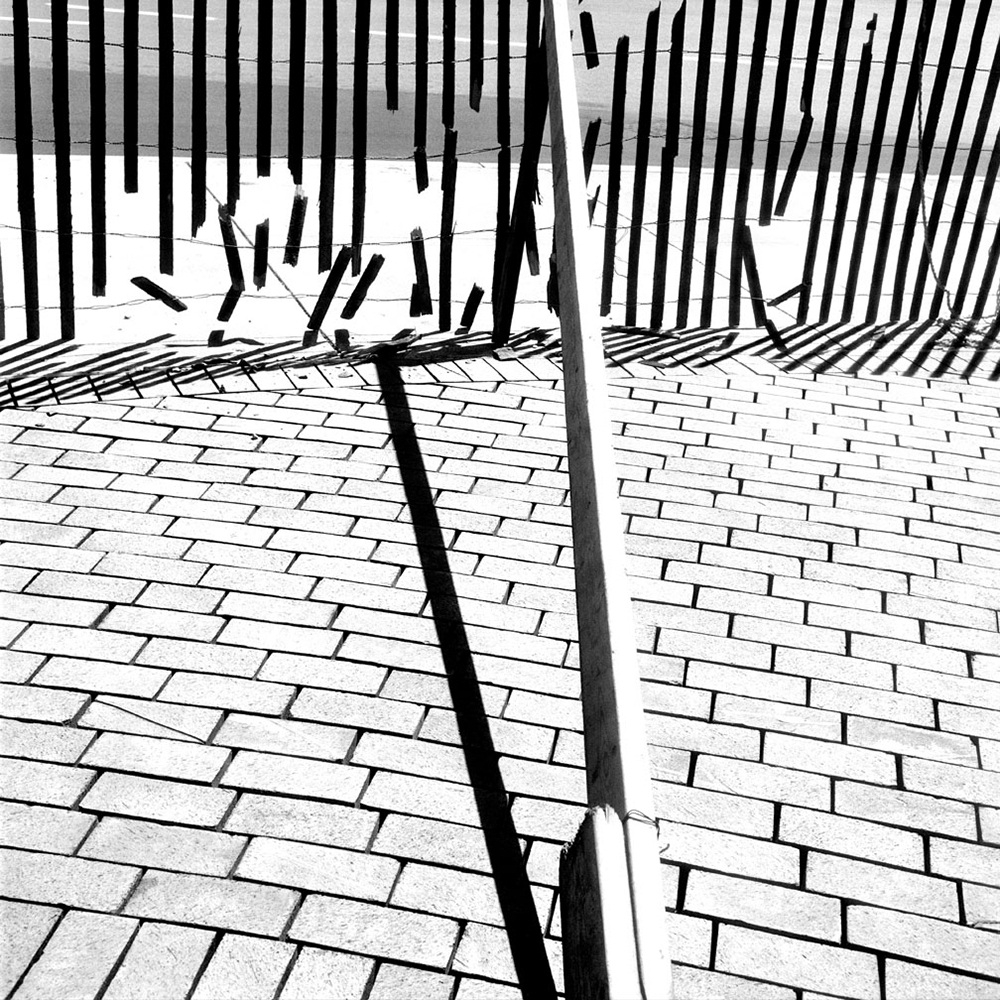Steven D. Foster: The Space Between
Steven Foster’s photographic career spans six decades and continues to this day. Beginning at the age of 10 Steven realized that he would dedicate his life to photography. In the years following Steve would create many photographic projects with subjects ranging from music and poetry to family and spirituality. I first came across Steven’s work as an intern at The Alice Wilds Gallery and was instantly captivated by his photographs. Steve seemed to have his own unique formal language with subjects that were very familiar. From the atmospheric subtle landscapes of Lake Michigan, to the sharp musical compositions of his Steve Lacy Series, Steven applied his vision across a range of subjects and processes. His Garage series and Lake Collages demonstrate an even deeper consideration for the photograph as an object. Working at an extremely small scale within the darkroom, these works not only speak to his unique language of seeing but also reveal a departure from straightforward observation through hand-constructed landscapes. More recently, Steven has been exploring synchronicity and the sacred in contemporary art practice. Currently, Steven Foster is showing selected works from 1977-2017 at The Alice Wilds in Milwaukee, WI from March 16th – April 28th.
Steven D. Foster was born in the small town, Piqua, Ohio in 1945. Photography came to Steven as an epiphany just before his dad died when he was 10 years old. It was in this moment that he knew he would become a photographer, and dedicate his life to the medium. In 1968 he received his BS from the Institute of Design at the Illinois Institute of Technology where he studied with Aaron Siskind, Arthur Siegel, and Wynn Bullock. Steven received his MFA in 1972 from the University of New Mexico where he studied photography with Van Deren Coke, Ray Metzker, and Beaumont Newhall. After graduate school, Steven went on to hold a position as an educator at Georgia State University in Atlanta from 1972-1975. Following that, Foster moved to Milwaukee and founded the photography department at the University of Wisconsin-Milwaukee, where he taught from 1975 until his retirement in 2007. Foster’s work has been published and shown widely, at institutions such as The George Eastman House in Rochester, New York, Chicago Center for Contemporary Photography, Pace/McGill Gallery in New York, Milwaukee Art Museum, The Atlanta Photography Group, Young-Hoffman Gallery in Chicago, and the Art Institute of Chicago. Steven currently resides in Canandaigua, New York.
1955: My Photography Epiphany
I was almost 10 years old, it was a summer day, and my cousin excitedly ran up to me to show me his new snapshots – fresh from the drugstore. I realized in that moment I wanted to be a photographer.
The great photographer Edward Weston wrote of The Flame of Recogninition. Fredrick Sommer, the great photographer and theorist said: you don’t find anything meaningful “out there” that isn’t already inside you. The great photographer Alfred Stieglitz talked about equivalents in the same way: “the outer world reflects one’s own inner world.” Later, when I studied CG Jung’s ideas about synchronicity the same ideas were again confirmed: the outer world is created by archetypal patterns within the Self. The East Indian sages and the sufis say similarly: “the outer world is a projection of one’s own inner Self.” So it seems that photography was my destiny, my dharma. Just as Kandinsky wrote of artists working from inner necessity; and just as Agnes Martin wrote of her art production stemming from what she called inspiration, so it seems to me that my life as a photographer was already written out for me. I just had to discover it and live it. And my epiphany and my father’s death was the starting point.
My father died shortly after my having had that epiphany, in August. He had been in the hospital so I was staying with my cousins and my Aunt Lilly and Uncle Bob. On the night that my dad died I had gotten a fever. Though it was a very hot evening I was shivering cold as I sat in the park with my cousins and my Aunt listening to the local band play music. ~ I woke myself up during the night: I was pounding my pillow harder and harder and harder. ~ Early the next morning my Aunt came to tell me that my Dad had died during the night.
My Aunt Betty came up to me after the funeral and said: “Stevie, now you’re the man of the house. You’ve got to take good care of your mother.” That responsibility really freaked me out, but it took me a long time to realize it. I think photography served me as a way to process this emotional and psychological weight, the sense of isolation and the longing for a father, the fear . . . that followed my father’s death.
After my dad died I became totally fixated on photography. I studied photo books from the library and bought camera magazines, and studied the darkroom equipment in the Sears Catalog photography section. I helped my friend Larry Householder clean up his dad’s old darkroom so we could use it, but before we could work in the lab Larry got very sick and the darkroom project had to be put on hold. By that December I was ready to request some darkroom equipment for Christmas. I wanted a darkroom I could call my own. – Steven D. Foster
Posts on Lenscratch may not be reproduced without the permission of the Lenscratch staff and the photographer.
Recommended
-
Nathan Bolton in Conversation with Douglas BreaultJanuary 3rd, 2026
-
Salua Ares: Absense as FormNovember 29th, 2025
-
Ricardo Miguel Hernández: When the memory turns to dust and Beyond PainNovember 28th, 2025
-
Pamela Landau Connolly: Columbus DriveNovember 26th, 2025













































































